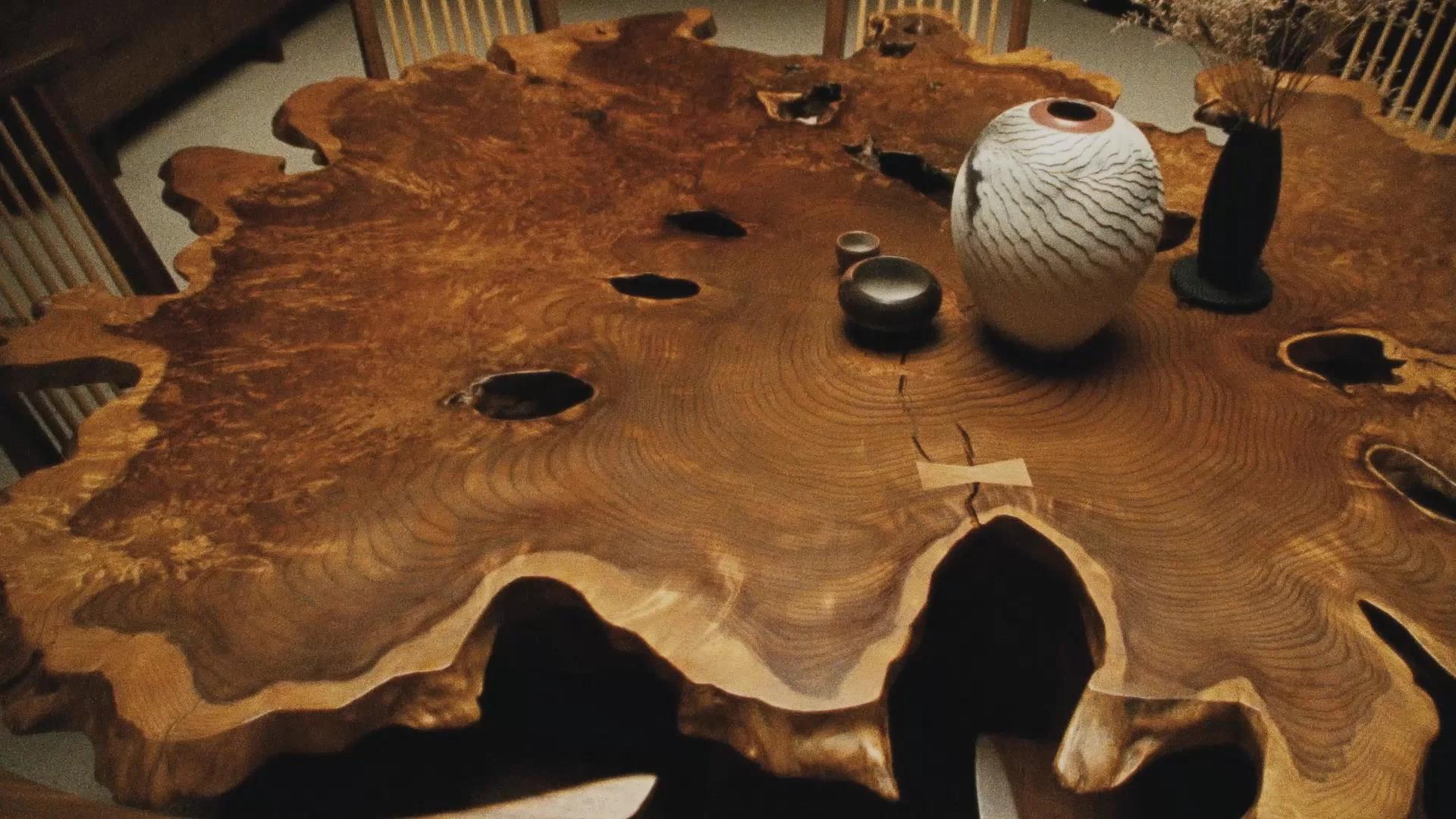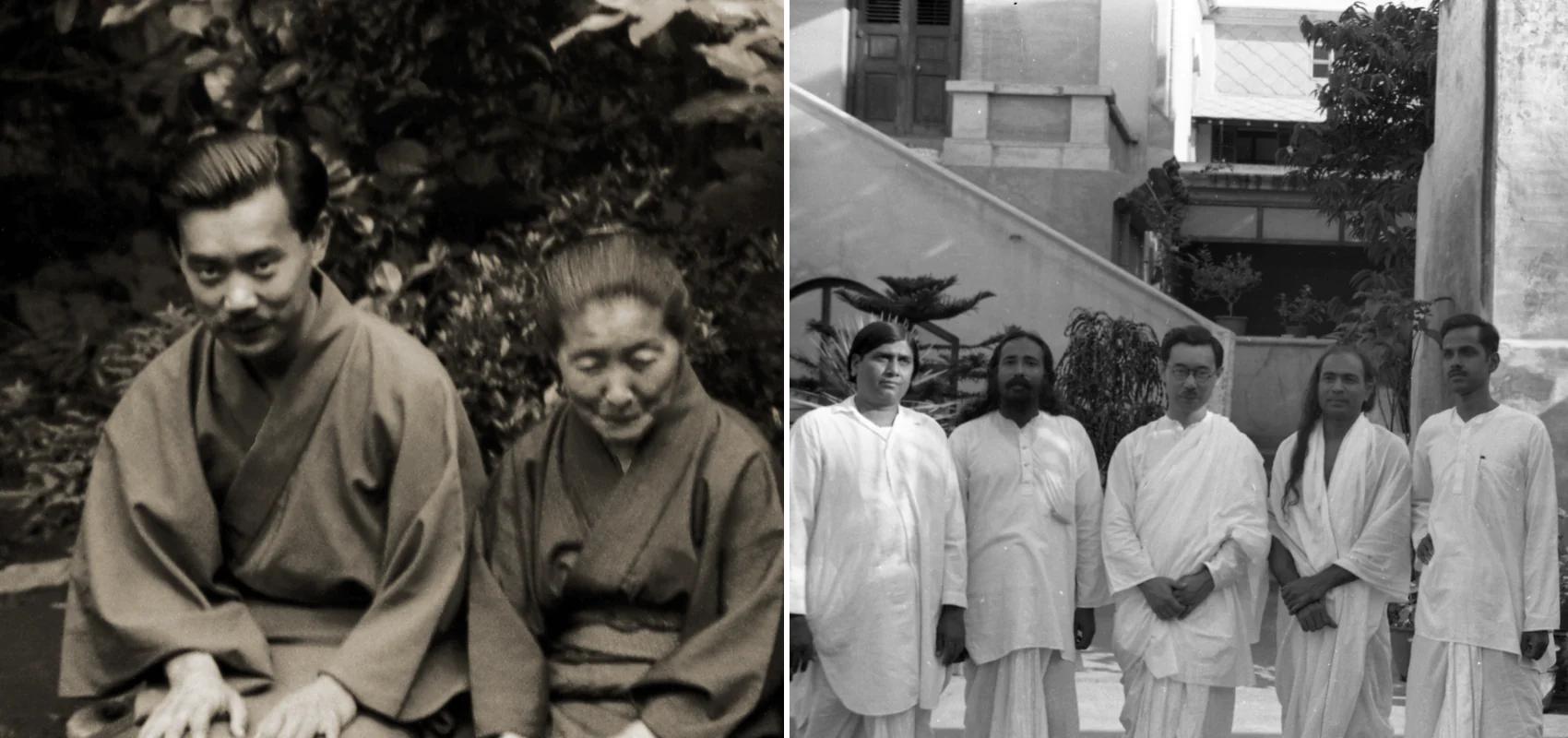IN THE MIX SEPTEMBER 18 2020
by Anna Carnick
A new film, 20 years in the making, traces George Nakashima’s extraordinary life and work

GEORGE NAKASHIMA
Photo © George Nakashima Woodworkers
“When I first started working on this film, I thought, man, this is going to be so easy,” John Nakashima says with a laugh. Twenty years in, however, on the eve of its release, the filmmaker—who is also the nephew of the film’s subject, legendary Japanese American designer and architect George Nakashima—acknowledges things played out a bit differently than expected. Tracing the extraordinary journey of one of design’s great talents, “a classic seeker’s tale that few people really know,” as John explains, George Nakashima: Woodworker has turned out to be, itself, an act of devotion.
“There are so many wonderful experts who know a lot about George,” John explains—hence his optimistic start. “But the thing is,” he adds, “every single expert I spoke to starts their [insight] only after George designed his first piece of furniture. And there’s just so much more that happens before then.”

GEORGE NAKASHIMA/ CONOID DESK | ASA NO HA FLOOR LAMP | CONOID BENCH
Photos © George Nakashima Woodworkers
That lesser known story is the heart of the new film, which peels back the layers of Nakashima's remarkable spiritual and creative development. While his furniture in particular, which he began crafting relatively late in life, is well documented—elegant, unexpected marriages of natural and modernist forms in rich, sometimes ancient woods, frequently celebrating whirly burls, unfinished edges, and the like—the film honors the life experiences that ultimately informed the designer’s wholly unique and hugely influential aesthetic.
As John says, “When you look at the furniture George made at the end of his life, which was probably the best work he made—everyone says so—they don’t look like anybody else’s furniture. So how did he come up with that?”

GEORGE NAKASHIMA/ ARLYN TABLE CELEBRATES WILD, FREE-FORM GRAIN AND CONTOURS OFTEN FOUND IN ROOTS
Photo © George Nakashima Woodworkers
Set against the backdrop of the Great Depression, a World War, and its aftermath, George Nakashima: Woodworker answers that question by presenting an epic life story—the kind we don’t hear much of these days. Born in 1905 in Spokane, Washington, George Nakashima was the son of first-generation immigrants. The film follows him from his youth, exploring the wilds of the American northwest and his early connection to nature; to the beginning of his architectural career; to the streets of Paris in the ’30s, where his fascination and frustration with modernism came to a head; to the Japanese countryside, where, while pursuing his ancestral roots, he discovered Zen aesthetics, master Daiku (or carpentry) craftsmanship, and the Shinto faith—the last of which emphasizes the awe and wonder that can be found in nature, a tenet that resonated deeply with Nakashima.

GEORGE NAKASHIMA IN JAPAN, 1935 | NAKASHIMA (CENTER) AT THE SRI AUROBINDO ASHRAM, LATE 1930S
Photos © George Nakashima Woodworkers
In 1937, in coordination with architect Antonin Raymond, with whom he had an important and enduring relationship, Nakashima volunteered for a job in French India, while war raged between Japan and China. The move proved to be pivotal in his understanding of his role in the world. As Nakashima observes in the film, “My real reason for being in India is that I was looking for myself.” He found his sense of purpose while working as an architect at an ashram and studying under yogi Sri Aurobindo. There, Nakashima was ultimately empowered to see the act of making as an act of faith. In 1938, on his birthday, he was given the Sanskrit name Sundarananda, or “One whose delight is in the beautiful," in a letter signed by Sri Aurobindo—an honor he held dear. “I think beauty is one aspect of the divine,” Nakashima explains in an interview. And later: “I’m a doer, I guess. I’m what you might call a Karma yogi, a yogi of action.”

NAKASHIMA AND MARION OKAJIMA IN PRE-WAR JAPAN | A 1944 NAKASHIMA FAMILY PORTRAIT IN THE US
Photos © George Nakashima Woodworkers
Nakashima met his future wife, Marion Okajima—herself the daughter of first-generation Japanese American immigrants—in pre-war Japan. In 1939, he returned to the land of his birth; just a few years later, he and his entire family, including their infant daughter, were imprisoned at the Minidoka Internment Camp in Idaho. There, amid the inhumanity of that experience, by what could perhaps be called fate, Nakashima encountered Gentaro Hikogawa, master Japanese Daiku (or master carpenter), under whose tutelage he learned to use traditional Japanese tools and woodworking techniques and embraced a disciplined, perfectionist approach. Following his release, facilitated with the help of Raymond, Nakashima eventually crafted his own, self-made world—what, over time, became a multi-acre compound that included his home, studio, and workshop—in New Hope, Pennsylvania.

NAKASHIMA FAMILY HOME
Photo © Ezra Stoller Archive - Esto; courtesy of George Nakashima Woodworkers
It was in this environment that Nakashima began to create the furniture that he would become so well known for, working on for decades into his eighties, combining elements from every chapter of his complex story and shaping them into something new and truly original. It was the work he created here that secured his legacy as the innovative godfather of the American craft movement.
“He used all those experiences [in his work],” the filmmaker says. “It’s a classic hero’s tale… He’s going out and getting the golden fleece, bringing back this special knowledge, and using that knowledge to build a whole creative career.” According to Mira Nakashima, George’s daughter and John’s cousin, “Dad’s lifework was important because it puts people—even though they’re not totally aware of it—it puts them back in touch with nature, back in touch with something that’s real, with God.”

GEORGE NAKASHIMA/ FAMED PEACE ALTAR FOR THE CATHEDRAL OF ST JOHN THE DIVINE IN NEW YORK CITY, INSTALLED 1986 | BOOK-MATCHED SANSO TABLE
Left: Photo Mary Bloom | Right:Photos © Ezra Stoller Archive - Esto; courtesy of George Nakashima Woodworkers
Upon Nakashima’s death in June 1990, John and his cousin Mira—who took over the family business and also wrote a book about her father (published in 2003 by Harry N. Abrams and now out of print)—began research together to try to better understand, as Mira puts it, “the history and raison d’etre of our common ancestor.”
John says simply, “Uncle George was a mystery to me.” He wanted to understand this curious character—and unfamiliar relative—who had risen to such fame. So together they pored over “small stashes of my father’s old letters and photographs, as well as other tangible remnants of his past,” Mira says, and, in subsequent years, “embarked on two remarkable journeys in an attempt to interview people in both India and Japan who had worked with my father and known him intimately many years ago.”

GEORGE, MARION, AND MIRA NAKASHIA AT HOME | GEORGE IN HIS WORKSHOP, CIRCA 1952
Photos © Ezra Stoller Archive - Esto; courtesy of George Nakashima Woodworkers
Following their extensive travels, Mira focused on writing her book; John, though, continued digging, interviewing multiple critics, woodworkers, historians, and others for years and years, producing different versions of the film. But none felt quite right—until now.
According to Mira, “The [project] had occupied such a large part of his life for so long, and he kept discovering new ideas and story lines… I think he was relishing the discovery of not only his Uncle George’s history but his own personal history as well.”
A worthy undertaking, to be sure.
Perhaps it’s even a bit more. As John says in the film, referencing Nakashima’s journey: “The act of creating can be a spiritual act. If the work is not to satisfy your ego, but surrender to God, give in to the universal energy. The answer was so simple, but profound. Life, the act of creating, and spirituality, can all be one.” ◆
Design Miami was proud to host the virtual debut of George Nakashima: Woodworker in early October 2020. To learn more about the documentary, visit John Nakashima's website here.


